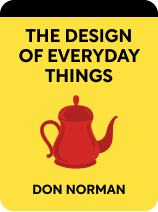

This article is an excerpt from the Shortform book guide to "The Design of Everyday Things" by Don Norman. Shortform has the world's best summaries and analyses of books you should be reading.
Like this article? Sign up for a free trial here .
What are the ethics of design? How seriously should people consider ethics when creating new products and technologies?
The ethics of design is one of the fastest-growing conversations when it comes to technology. It argues that creators have an obligation to design ethically since their products will be used by real people and could have serious effects.
Read more about the ethics of design and why they matter.
The Ethics of Design
Design impacts people on a cultural and societal level, not just individuals. It can be a powerful force for social change, which means it must be used responsibly. What does that mean for designers? What are the ethics of design?
The Future of Content Creation
The almost universal availability of new technologies is changing the way we create and engage with information. Tools like blogging sites, integrated cameras, and free editing software make it possible for anyone to publish new media on any subject and reach a wider audience than ever before. Norman calls this “the rise of the small.” This raises one of the questions of the ethics of design.
Easy access to technology is a game changer for parts of the world with less developed infrastructure. Access to information and low-cost technology has made it possible for people to innovate in brand new ways and develop solutions for their needs based on the resources they have available (like bicycle-powered water pumps and solar chimneys). These designs can then be shared online and adopted wherever they might be useful, even across the world.
While technological advances make amateur content creation easier and more accessible, the opposite is true for professional content creators. The programs and devices required to make professional-quality media are more sophisticated (and more expensive) than ever before. This leveling of the playing field is a double-edged sword: while accessing information is easier than ever, not all that information is true, and creating media that has been fact-checked by experts requires expensive professional resources.
Consumerism and Sustainability
Like content creation, the design of durable goods is also changing as technology evolves. The ability to compare items from different companies online before deciding which to purchase has made competition between manufacturers fiercer than ever. In this environment, more emphasis is placed on aesthetics and features that are likely to entice buyers and give companies an edge. A product can be perfectly designed for its function, but will still lose out to more attractive versions, even if they’re far less functional.
The need to attract buyers creates another hurdle in the ethics of design. While services like healthcare and food distribution are self-sustaining (because there will always be a need for them), durable physical goods are not: If everyone who needs a particular product purchases one, there’s no one left to sell it to. One way manufacturers get around this is through planned obsolescence, the practice of designing products that will break down after a certain amount of time and need to be replaced.
Trends are another tool companies use to entice repeat buyers—if there is a newer, more fashionable version of a product, buyers are more likely to upgrade. This creates a cycle of consumption: buy something, use it until it breaks or goes out of style, throw it away, and buy another. While this cycle is good for business, the waste it generates is horrible for the environment.
Thankfully, the combination of new technologies and a growing cultural awareness of sustainability issues is creating a new paradigm. It is easier than ever to design sustainable versions of products (like streaming services rather than physical copies of movies), and environmental friendliness is now a selling point.
The ethics of design are regularly changing as designers and businesses discuss how to incoporate new ideas and visions into designs.

———End of Preview———
Like what you just read? Read the rest of the world's best book summary and analysis of Don Norman's "The Design of Everyday Things" at Shortform .
Here's what you'll find in our full The Design of Everyday Things summary :
- How psychology plays a part in the design of objects you encounter daily
- Why pushing a door that was meant to be pulled isn't your fault
- How bad design leads to more human errors






